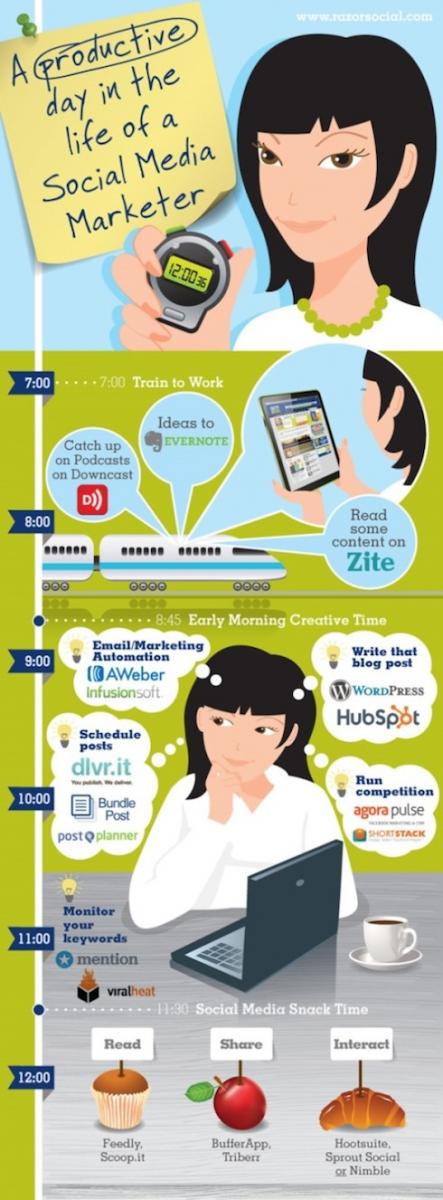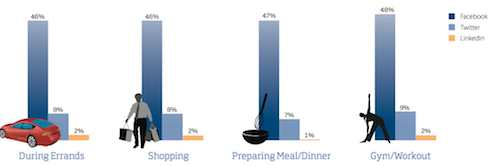By adaptive - December 11th, 2013
New legal guidance for social media usage, radio and social engagement and how mobile is social media?
Listen but no tweet
New research from Brandwatch has found that radio listeners are not engaging with the station’s Twitter account, as their findings show only 0.4% interact using this channel. However, it would seem that like radio, Twitter is being used as a broadcast medium, as Brandwatch discovered that a station could increase its audience activity by over 80% when it also increased its use of Twitter.
Joel Windels, marketing manager EMEA, Brandwatch commented: “Social media is posing both a problem and opportunity for brands, and each industry is adapting to it in a different way. Radio at first might seem slightly at odds with this new media revolution, but this research shows that few stations are making the most of these sweeping changes in the ways that people communicate with one another.”
Radio has been a stalwart of marketing for decades, and it seems Twitter can be used constructively. However, radio isn’t leveraging this channel to its best effect, as Brandwatch’s research found that only 15% of radio stations use an official hashtag in their tweets, and incredibly, none of the 20 most listened to stations used in this test promoted their Twitter account on the station’s bio.
It seems that businesses are still missing the point that Twitter and the other social media networks have to be integrated together. There is little benefit from just having a Facebook page if your brand advocates are using Pinterest. Radio stations are illustrating how a narrow and unsupported social media presence is worse than having no social media presence at all.

Which tools to use?
As a social media marketer the tools that your corporation chooses to manage its networks can be critical to get right. At the moment we are in gold rush mode with a plethora of tools to choose from.
A handy infographic from Razor Social illustrates what they think is a typical day in the life of a social media marketer. The blog post that supports the infographic is of course just one way you could approach your social media-marketing day, but is a good illustration of how the tools that is now available can become an effective toolbox.

Social is mobile
There is little doubt that the smartphone has transformed how social media is accessed. Research that looked closely at mobile phone usage in the US Facebook activity revealed that social has permeated every stratum of our lives. As IDC concluded: “Social has become so engrained in our behaviour that we engage with it even when doing every day activities. Using Facebook throughout the day is a given for most smartphone owners. The multitude of ways we use social, and specifically Facebook, (one-on-one, one-to-many, private, public, synchronous, asynchronous, etc.) allow it to fit easily and seamlessly throughout our days.”
Also: “Social begets social. The use of social applications is higher during events when we are out socially. This is related to the desire to share experiences, especially when we are with those we care most about. Social applications are designed with calls to action, like posting status updates and check-ins. This in turn drives more sharing, especially when we are out socializing.”
Facebook ranks as a top 3 activities done on smartphones. 70% of respondents use it. Among these Facebook people, 61% use it each day. Reading news feed is the top activity at 77%. 18-24 year olds use more services on Facebook, especially directly messaging with individuals and groups and sharing pictures and videos. With the exception of reading one’s news feed – which is a great phone snacking activity – every other Facebook service has higher usage levels over the weekend (Friday-Sunday), demonstrating its role in communication, sharing and engagement in our most important relationships.

New best practice guide for social media campaigns
Earlier this month Dominic Grieve QC MP has announced that the Chartered Institute of Public Relations (CIPR) Social Media Panel would publish guidance to prevent anyone from committing contempt of court after some high profile incidents involving jurors.
Grieve stated: “Blogs and social media sites like Twitter and Facebook mean that individuals can now reach thousands of people with a single tweet or post. This is an exciting prospect, but it can pose certain challenges to the criminal justice system.
“In days gone by, it was only the mainstream media that had the opportunity to bring information relating to a court case to such a large group of people that it could put a court case at risk. That is no longer the case, and is why I have decided to publish the advisories that I have previously only issued to the media.
“This is not about telling people what they can or cannot talk about on social media; quite the opposite in fact, it’s designed to help facilitate commentary in a lawful way. I hope that by making this information available to the public at large, we can help stop people from inadvertently breaking the law, and make sure that cases are tried on the evidence, not what people have found online. This change also brings more openness to government’s dealings with the media so that both sides can be accountable to the public for what they do and say.”
Stephen Waddington, CIPR president 2014 and chair of the CIPR Social Media Panel, said: “This updated guidance from the CIPR is timely in the week that the UK Attorney General highlighted some of legal issues relating to social media usage. The document from the CIPR complements the Code of Conduct and provides pragmatic advice for practitioners related to the burgeoning area of social media.”
Also available is a handy guide from Immediate Future to the wider legal implications of using social media networks. Corporations need to be aware of how every tweet or Facebook update could impact their legal status. What is clear is that the moves by the Attorney General mean the honeymoon period for social media networks is over. They must all now be considered within your corporation’s wider legal policy as a matter of urgency.
Until next time….
The Useful Social Media team.
Next Reads
June 2014, New York
Become a social business: For superior marketing response, sharper corporate decision-making, enhanced innovation and a happier, more loyal customer
Brochure Programme